
Fitness tips for women in their 50s

Strength training, Women naturally begin to lose muscular mass as they age. Regular strength training activities, such as bodyweight exercises or weightlifting, can assist fight this natural deterioration.
Your metabolism will be enhanced, and by gaining and keeping muscle mass, you'll also increase bone density and lower your risk of osteoporosis.
Activities that improve heart health, increase endurance, and burn calories are known as aerobic or cardiovascular activities. Exercises that increase heart rate and enhance overall fitness include brisk walking, cycling, swimming, and dancing. These activities are fun and effective methods to get your heart rate up.
Flexibility and Balance
As we age, flexibility and balance become more crucial for maintaining mobility and avoiding accidents. Stretching, increasing flexibility, and strengthening balance and coordination are the main goals of yoga and tai chi.
Warm-up and cool-down, It's important to warm up your muscles and get your body ready for physical activity before beginning any exercise. Light aerobics, dynamic stretching, or mobility drills can all be incorporated into a warm-up. Similar to this, cooling down with static stretches after a workout can aid in preventing muscular discomfort and lowering the chance of injury.
As we get older, our bodies may become more prone to various aches and pains. During exercise, pay attention to any discomfort or pain and don't force yourself to continue. To avoid injuries, adjust the activity if something doesn't seem right or consult a healthcare provider.
Keeping hydrated is essential for women in their fifties, especially when exercising. Water supports bodily processes, controls body temperature, and promotes general wellbeing. Don't wait until you're thirsty to hydrate; make sure to consume enough water throughout the day.
Healthy Eating
For general well-being and physical fitness, a balanced diet is essential. A variety of nutrient-dense foods, such as fruits, vegetables, lean meats, whole grains, and healthy fats, should be prioritized. A balanced diet will help your body's recuperation and repair mechanisms as well as give you the energy you need to exercise.
Regular Exercise, Aim for at least 150 minutes of moderately paced or 75 minutes of vigorously paced aerobic activity per week, in addition to at least two days of muscle-strengthening exercises. You'll keep improvement and sustain motivation if you stick to a regular exercise schedule.
Recovery, Your body may require more time as you become older to recover from strenuous exercise. Make sure to give your body enough time to recover between workouts, and think about include things like gentle stretching, foam rolling, or restorative yoga.
Include Fun Activities
Being active need not be a chore. Whatever your preferred kind of exercise, whether it be dancing, hiking, gardening, or sports, choose something you truly enjoy doing. You'll be more inspired to stick to your regimen if you include enjoyable activities.
Avoid Comparisons, Rather than comparing yourself to others, it's important to concentrate on your own progress. No matter how minor they may seem, embrace your personal path and recognize your accomplishments.
Sleep, A good night's rest is essential for recuperation and general health. In order to promote the physical and emotional wellness of your body, aim for 7-9 hours of sleep each night.
Everybody's path to fitness is different. Before beginning any new workout regimen, always check with your doctor, especially if you have any health issues or concerns. They may offer specific guidance and guarantee that your fitness program is secure and suitable for your particular requirements.
Exercises should be modified as necessary to accommodate your level of fitness and any physical restrictions you may have. For instance, instead of jogging if you have knee problems, try a low-impact activity like cycling.
Work on Posture
As we age, several factors, such as prolonged sitting and changes in muscle tone, may have an impact on our posture. To improve posture and lower the risk of back discomfort, concentrate on workouts that target core stability and back muscles.
Stay Social, Participating in fitness programs or clubs can offer social support and increase enjoyment of exercise. Participating in group activities or working out with friends can increase accountability and motivation.
Keep an eye on your exercise intensity to make sure you're pushing yourself hard enough without going too far. Use the "talk test" to determine the intensity of your exercise: if you can chat to someone while working out, it's probably moderate. You may be exercising too hard if you can't speak.
Think about low-impact workouts
High-impact exercises can strain joints and may not be appropriate for everyone. Low-impact exercises that nonetheless have great cardiovascular benefits, such as swimming, cycling, or utilizing an elliptical machine, can be easier on your joints.
Include Balance activities, Include balance-targeting activities like single-leg stands and stability ball exercises. These can increase general stability and assist lower the chance of falling.
Regular Stretching is Important, As we age, our muscles may become more rigid, reducing our flexibility and mobility. Stretching on a regular basis can assist to maintain and develop flexibility, facilitating daily activities and lowering the chance of injury.
Stay Consistent, To observe increases in your level of fitness, consistency is essential. Aim for a well-rounded fitness program that combines activities for balance, flexibility, strength, and aerobic activity. Maintain a regular schedule to reap the rewards over time.
Track Your Progress, Use fitness apps or a workout journal to keep track of your development. Recording your workouts, monitoring your progress, and marking accomplishments may be hugely motivating.
Exercise is a great approach to manage stress, but you should also think about introducing other stress-relieving practices into your daily routine, such as deep breathing exercises, meditation, or time spent in nature.
Fitness improvement may take some time, so it's important to be patient and nice to yourself throughout the process. Celebrate your accomplishments, no matter how minor, and never forget that each step you take is an important one.
Get Regular Health Exams
As we age, it becomes increasingly important to get regular health exams. To keep track of your overall health, talk about any fitness concerns, and make sure your exercise program complies with your medical needs, speak with your healthcare professional.
There is never a bad time to begin or advance your fitness journey. You may improve your physical and mental well-being and live a more active, satisfying life in your 50s and beyond by making exercise a regular part of your routine and forming healthy habits.
Accept Functional Exercises, Put your attention on exercises that simulate activities and motions from daily life, or functional exercises. Your ability to bend, lift, and reach easily while performing daily tasks will likely improve as a result of these workouts.
Take Care of Your Joints, As we age, our joints may become more prone to damage. To lessen impact on the joints while still obtaining an effective workout, think about incorporating joint-friendly workouts like swimming, water aerobics, or cycling.
Mind-Body Connection
Mindfulness practices and mind-body workouts like Pilates or Qigong can help people become more aware of their bodies, lower stress levels, and increase general wellbeing. These techniques stress the link between the mind and body, encouraging calmness and mental clarity.
Address Menopause-Related Changes, Hormonal changes brought on by menopause may have an impact on your body's composition and energy levels. Hot flashes and mood swings connected to menopause can be controlled by being active and leading a healthy lifestyle.
Exercise Outside, Take use of nature by exercising outside, such as hiking, riding, or gardening. Outdoor exercise can improve your mood, relieve stress, and offer a welcome change of scenery.
Avoid Overtraining, Regular exercise is good for you, but you shouldn't push yourself too hard, especially if you're new to fitness or haven't been active consistently in the past. In order to avoid burnout and damage, give your body time to adjust and recover.
Be Hydrated While Exercising
Drink enough of water to be properly hydrated while doing physical activity. Dehydration increases the risk of heat-related illnesses and can reduce performance.
Invest in Comfy Shoes, Wearing the right shoes is essential for exercising, especially as we get older and our joints become more susceptible. Spend money on supportive shoes that are comfy for the activities you choose.
Think about Personal Training, If you don't know where to begin or want individualized advice, think about hiring a qualified personal trainer. To ensure safe and efficient exercises, they can design a customized fitness plan and offer the right guidance.
Support Your Immune System, Regular exercise, a healthy diet, and enough sleep can all help to support your immune system, which will keep you healthier and more able to fend off infections.
Find opportunities to keep active throughout the day in addition to your scheduled workouts. Your daily activity levels can be increased with simple routines like doing household tasks, going for brief walks during breaks, and using the stairs rather than the elevator.
Create Achievable Goals, Based on your present level of fitness, create goals that are both short- and long-term in nature. Celebrate achieving milestones and use them to spur on further progress.
Join fitness classes or online communities to meet people who have similar fitness goals and to interact with like-minded people. The encouragement and camaraderie can be motivating and enhance the enjoyment of the fitness journey.
Concentrate on Quality Sleep
Getting enough sleep is essential for healing and general wellness. Make sure you get adequate sleep and establish a nightly routine to help your body regenerate.
It's never too late to start exercising or to get better at it. Fitness is a lifelong endeavor. Make decisions that are in line with your own requirements and preferences while being patient with yourself and paying attention to your body. In your 50s and beyond, regular exercise and a healthy lifestyle can result in an increase in vitality, boosted self-esteem, and a stronger sense of wellbeing.
Cross-Train, Use a variety of workouts to break up your routine and keep you from getting bored. Cross-training lowers the likelihood of overuse problems while also enhancing general fitness.
When engaging in high-impact workouts like sprinting or leaping, it's important to keep an eye on your body's reaction. To give your joints time to recover, think about alternating high-impact exercises with low-impact ones.
Stress Core Strength, Stability, balance, and general functional fitness all depend on a strong core. To develop your core muscles, incorporate workouts like planks, bridges, and abdominal twists.
Use Correct Form
Using the right form is essential to preventing injuries and maximizing the benefits of any workout, whether it's flexibility, cardio, or strength training. Consult a fitness expert for advice if you're uncertain about proper form.
Don't Skip the Warm-Up and Cool-Down, Before exercising, warming up helps your body get ready for the demands of the activity, and cooling down aids in a gradual recovery. Both are necessary for avoiding injuries and performing better.
Focus on non-scale victories like greater flexibility, more vitality, or better sleep as you celebrate your victories. These serve as insightful gauges of your development and general wellbeing.
Challenge Yourself Gradually
Continue to push yourself by gradually increasing the duration or intensity of your workouts. Sustainable gains can be achieved through gradual progressions without taxing your body.
Rest days are essential for recuperation and muscle restoration, so plan regular rest days. Give your body the time it needs to relax and recover, especially after challenging workouts.
Address Specific Health Concerns: If you are concerned about your specific health, go to a doctor or other specialist who has experience treating women in their fifties.
Utilize fitness apps and wearable technology to track your exercise levels, heart rate, and advancement over time. These resources might inspire you and offer insightful information about your fitness quest.
Plan for Travel and Busy Days, If you frequently travel or have busy days, make workout plans that are shorter and more time-effective. To stay active when traveling, take into account bodyweight workouts or portable fitness equipment.
Be Aware of Hormonal Changes, Your ability to tolerate exercise and your level of energy throughout perimenopause and menopause may be impacted by hormonal changes. Recognize the potential effects these changes may have on your workouts and modify your plan as necessary.
Enjoy the process of remaining active and locating activities that you enjoy while being patient. Be kind to yourself and be aware that it can take some time to make progress. A positive mindset and consistency will produce long-lasting outcomes.
Stay Positive About Aging
Maintain a positive view on aging and recognize the advantages of staying active at any age. Keep in mind that preserving vitality and health, rather than merely beauty, is the key to keeping fit in your 50s and beyond.
Before making any changes to your workout regimen, especially if you have any health ailments or worries, speak with your healthcare professional. Your health and safety come first, and a tailored approach to exercise can assist you in achieving your objectives while taking into account your particular requirements.
Focus on Mindful Eating, Be aware of your eating patterns and pay attention to your body's signals of hunger and fullness. You may maintain a healthy weight and have a pleasant relationship with food by practicing mindful eating.
Incorporate HIIT workouts, HIIT workouts comprise quick bursts of intensive exercise followed by quick recovery periods or periods of lesser intensity. Your metabolism will increase and your cardiovascular fitness will become better faster if you incorporate HIIT into your program.
Track accomplishments and Celebrate Success
To keep track of your workouts and accomplishments, keep a fitness notebook or use fitness apps. Celebrate your progress along the road to keep yourself inspired and centered.
Try Bodyweight Exercises, Bodyweight exercises, such as squats, lunges, and push-ups, can be done anywhere and require no special equipment. They are effective for building strength and can be modified to suit your fitness level.
Seek Professional Guidance, Consider consulting with a registered dietitian, nutritionist, or certified fitness professional who has experience working with women in their 50s. They can provide personalized guidance and support for your health and fitness goals.
Focus on Long-Term Health, Remember that fitness is not just about short-term goals or aesthetics. Prioritize your long-term health and well-being by making sustainable lifestyle changes.
Support muscular recovery by consuming enough protein and eating foods that have anti-inflammatory characteristics, such as fruits and vegetables, after strenuous workouts.
Implement mobility exercises, Joint mobility might deteriorate as we age. Maintain flexibility by including movements that increase joint mobility, such as light stretching and mobility drills.
Reduce Sedentary Time, Try to spend as little time sitting as possible, especially if you work a desk job. To break up lengthy stretches of sitting, stand up, stretch, or go for little walks throughout the day.
Enjoy Water-Based Activities, Swimming or water aerobics can work your entire body while being easy on your joints. Take into account including these exercises in your low-impact cardio regimen.
Exercise can be good for your mental health, but you should also think about other activities that encourage relaxation and stress reduction, such as meditation, mindfulness, or hobbies.
Set an example for others
To motivate those around you, whether they are family, friends, or coworkers, adopt an active lifestyle. Others may be inspired by your positive example to put their health first.
Accept Restorative Yoga, Restorative yoga aids in body and mind relaxation and renewal. It may be especially helpful for reducing tension and encouraging restful sleep.
Exercise while listening to motivational podcasts or books on audio: Choose podcasts or books on audio that you find inspiring. The workout may be more fun if you put some thought into it.
Set Small, Achievable Goals Divide your fitness aspirations into manageable, incremental steps. Celebrate each success to keep yourself motivated and on course.
There is no one size fits all approach to fitness. Find what suits you best, and don't be afraid to change your routine to suit your preferences and requirements. Stay dedicated to incorporating fitness into your lifestyle, and you'll reap rewards that go far beyond your physical health.
Participate in Social Activities, Exercise can be made more fun and supportive by enrolling in fitness classes or clubs with friends or people who share similar interests.
Include thoughtful Walking, Go for thoughtful walks through the neighborhood or in a natural setting. To relieve stress and encourage mental clarity, pay attention to your breathing and the environment.
Track non-scale markers to gauge your success, such as higher levels of energy, a happier mood, better sleep, or greater flexibility. Even more significant than losing weight or inches are these good adjustments.
Change Exercise While Traveling, When traveling, schedule active outings like walking tours or hiring bikes to explore the area. It can be enjoyable and gratifying to be active when on vacation.
Exercise is a natural stress reliever. Use exercise to manage stress. Engage in regular physical activity as part of your daily routine to properly handle stress.
Use resistance bands
Resistance bands are lightweight, adaptable equipment that can give your strength-training regimen some variety. They are fantastic for strengthening the entire body while concentrating on particular muscle areas.
Try Water-Based Strength Training, Using aquatic dumbbells or other water-based resistance equipment can give you a full-body workout in the pool that is both difficult and low-impact.
Adopt a body-positive attitude and concentrate on your body's incredible capabilities rather than just its appearance. Accept your body as it is and work on your self-acceptance.
Avoid Crash Diets, Crash diets and excessive calorie limitations can be bad for your health and may cause you to lose muscle. Change your dietary habits to ones that are sustainable and balanced.
Challenge Your Brain, You can challenge your brain by doing puzzles, brainteasers, or learning new skills. The state of one's mind affects their overall wellbeing.
Try New Things: Don't be scared to try out new sports or fitness classes. Trying out new exercises helps keep your workout regimen interesting and prevent plateauing.
Deep breathing exercises and pranayama can help you relax, manage stress, and expand your lung capacity. Include them in your daily practice.
Create a Community of Support
Surround yourself with people who will help and support you on your fitness quest. You can be inspired to maintain consistency and accountability by a welcoming and encouraging environment.
Balance Cardio and Strength Training, When planning your workout, try to create a balance between cardio and strength training. Both are necessary for general health and fitness.
Emphasize Mindful Eating: Pay attention to your food's quality and quantity sizes. To avoid overeating, take your time eating and try not to be distracted.
To be inspired and educated about the most recent advances in the fitness industry, keep up with fitness trends, new exercises, and health facts.
Utilize fitness apps that provide home workout regimens for your workouts. These applications frequently offer video tutorials and a variety of training schedules that you may do at home.
Exercise Routine
Schedule your workouts in advance and treat them like appointments. Setting out a specific time each day to exercise can help you prioritize your health.
Avoid Comparisons, Concentrate on your personal development rather than contrasting your fitness journey with that of others. Everybody has a different beginning place and journey.
Celebrate your health accomplishments with non-food rewards, such as booking a day at the spa or investing in new exercise equipment.
Maintain a Regular Sleep Schedule
Sleep is crucial for both the recuperation of your muscles and your general well-being. To support your attempts to get fit, try to maintain a regular sleeping routine.
Don't let setbacks deter you; they are a normal part of any fitness quest. Instead of being deterred by them, seize the chance to grow and learn from them.
Exercises that focus on improving balance and posture, such yoga postures and stability drills, should be included. Maintaining proper posture helps to align the body as a whole and lessens stress on the muscles and joints.
Keep a Positive Attitude
Your motivation and adherence to your exercise regimen can be dramatically impacted by your outlook. Accept obstacles with optimism and have faith in your abilities to succeed.
Continually educate yourself on matters relating to health, exercise, and nutrition. You can make well-informed decisions regarding your wellbeing when you are well-informed.
Share Your Journey: If it makes you comfortable, share your fitness journey on social media, with friends, and family. Others may be motivated to start their own fitness journeys by your experiences.
Be Patient When You Hit A Plateau
In Fitness, Plateaus Are Common, But They Can Be Temporary. Your perseverance and patience will finally pay off.
Celebrate your age by embracing the experience and wisdom that come with getting older. Make the most of your experience to motivate others to live happy, healthy lives.
It's Never Too Late: Keep in mind that it's never too late to start or make healthy adjustments, regardless of where you are in your fitness journey.
Celebrate Your Success, Give yourself some time to reflect on and enjoy your fitness victories. You should be pleased of your dedication to your health and wellbeing!
You can continue living an active and rewarding lifestyle well into your fifties by using these fitness advice. Make fitness a sustainable and pleasurable part of your life by paying attention to your body, enjoying the process, and listening to it.










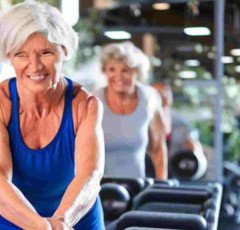





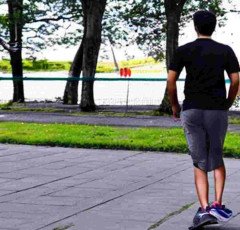


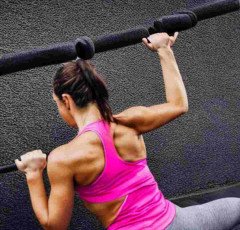

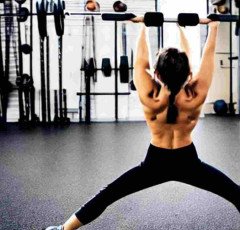




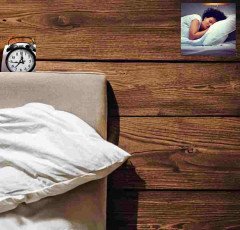






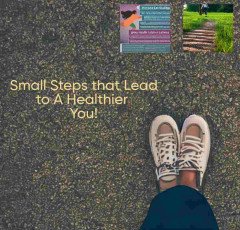













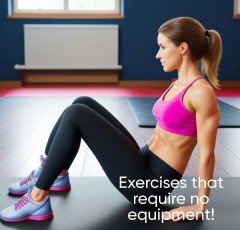

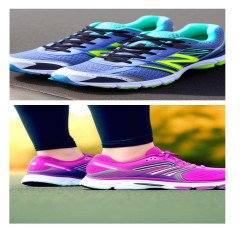


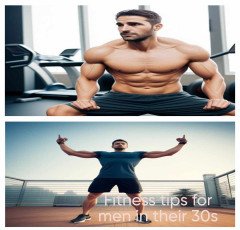


































 Creative Brief For Video Shoot
Creative Brief For Video Shoot  Air Purifier for Home
Air Purifier for Home  Kitchen Daily Use
Kitchen Daily Use  TitTok Revolution
TitTok Revolution  Amazon Best Selling Products
Amazon Best Selling Products  Smart Watches
Smart Watches  Digital Voice Recorder
Digital Voice Recorder  Best Sellers On Amazon
Best Sellers On Amazon  Prime Video
Prime Video  Online Marketing
Online Marketing  Best Phone
Best Phone  Motion Sensor Light
Motion Sensor Light  Wireless Bluetooth Earphones
Wireless Bluetooth Earphones  Best Robotic Vacuum Cleaners
Best Robotic Vacuum Cleaners  Smart Doorbell
Smart Doorbell  Duke T Shirts
Duke T Shirts  All Wireless Products
All Wireless Products  Best Home Appliances
Best Home Appliances  NordLocker
NordLocker  Bathroom Mirrors
Bathroom Mirrors  Hello Theme
Hello Theme  Rakhi
Rakhi  NordPass
NordPass  Dell Laptop
Dell Laptop  Essentials for Gamers
Essentials for Gamers  Online Technology Classes
Online Technology Classes  Best Selling Books
Best Selling Books  iPhone cable
iPhone cable  Sennheiser
Sennheiser  Crocs
Crocs  Hanging Lights For Living Room
Hanging Lights For Living Room  One World Collection
One World Collection  The Secret Email System
The Secret Email System  LCD Writing Tablet
LCD Writing Tablet  Echo Dot - Smart speaker with Alexa
Echo Dot - Smart speaker with Alexa  Top Rated From Amazon
Top Rated From Amazon  SOFAS
SOFAS  Men Clothing
Men Clothing  Adidas Shoes
Adidas Shoes  Women Fashion
Women Fashion  Only For The United States
Only For The United States  NordVPN
NordVPN  BEST SELLER TOP10
BEST SELLER TOP10  Graphics & Design
Graphics & Design  SEO Checklist
SEO Checklist  Door Handle Collection
Door Handle Collection  HP Laptop
HP Laptop  Pet Care Products
Pet Care Products  Unlimited access to classes on illustration, photography, design, film, music
Unlimited access to classes on illustration, photography, design, film, music  ELECTRONIC ACCESSORIES
ELECTRONIC ACCESSORIES  Wall Lamp
Wall Lamp  Healthy Ingredients
Healthy Ingredients  ASUS Laptop
ASUS Laptop  Unreal Engine 5 For Beginners Learn The Basics Of Virtual Production
Unreal Engine 5 For Beginners Learn The Basics Of Virtual Production  Realme Smart Phone
Realme Smart Phone  RPM 3.0
RPM 3.0  Acer Laptop
Acer Laptop  ASPINAL LONDON
ASPINAL LONDON  Stylish Sneakers by Red Tape
Stylish Sneakers by Red Tape  The Click Engine
The Click Engine  Puma (Clothing & Accessories)
Puma (Clothing & Accessories)  Apple iPhone
Apple iPhone  Dual USB Car Charger
Dual USB Car Charger 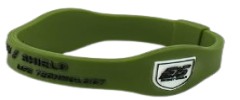 Wristbands
Wristbands  Samsung Mobile
Samsung Mobile  Kitchen Tap
Kitchen Tap  Hot Bags For Pain Relief
Hot Bags For Pain Relief  Artificial Intelligence
Artificial Intelligence  Favorite Company (Cuelinks)
Favorite Company (Cuelinks)  Wireless Gaming Mouse
Wireless Gaming Mouse  1150+Trendy kids coloring pages Bundle
1150+Trendy kids coloring pages Bundle  4k Projector For Home
4k Projector For Home  Home Decor Items
Home Decor Items 


















